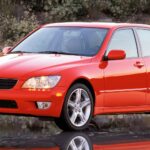Forza 6 offers a thrilling drifting experience, but mastering the art of sideways action requires a perfectly tuned car. This guide provides a comprehensive walkthrough of how to transform your ride into a drift missile. From choosing the right car to fine-tuning your suspension, we’ll cover everything you need to dominate the drift scene.
Choosing Your Drift Weapon
While many Rear-Wheel Drive (RWD) cars can drift, avoid mid-engine and rear-engine vehicles. Their rear weight bias promotes grip, making drifting more challenging. Front-engine RWD cars generally offer a more balanced starting point for drift tuning. Remember, some cars can be converted to RWD after purchase.
(A front-engine, RWD car is generally ideal for drifting)
Essential Upgrades
Maximize your car’s drift potential with these key upgrades:
Platform and Handling: Opt for Race components for optimal performance.
Drivetrain: Upgrade to Race specifications throughout.
Wheels: Choose Street or Sport tires for competitive drifting (Racing Slicks are often restricted). Experiment with tire width; wider rear tires enhance grip, while some prefer wider front tires.
Aspiration: Single turbochargers are popular, but be mindful of turbo lag. Superchargers offer more immediate power delivery.
Performance: A Sport Flywheel is crucial. Keep horsepower within a reasonable range (around 400hp is a good starting point), and aim for an S Class car for competition.
Fine-Tuning for Drift Perfection
Tire Pressure: Aim for 32 PSI while hot. Start at 28 PSI and adjust after a few laps, monitoring tire pressure via telemetry.
(Monitoring tire pressure through telemetry is crucial for optimal grip)
Alignment:
- Camber: Use negative camber (-4 to -5 degrees front, -1 to -2 degrees rear). Adjust until camber is close to 0 while drifting.
- Toe: Positive toe in the front increases drift angle, while rear toe should be between 0 and -0.5 degrees.
- Caster: Higher caster increases stability, while lower caster enhances responsiveness. Experiment to find your preferred balance.
Anti-Roll Bars: Use the formula (A-B)C+B=X, where A is the stiffest setting (40), B is the softest (1), and C is the front/rear weight percentage.
Springs: Apply the same formula as anti-roll bars, but use the car’s specific spring rate ranges. Fine-tune spring stiffness based on track characteristics; tighter springs for tight tracks, softer springs for high-speed courses.
Ride Height: Slightly raise the front end compared to the rear for better weight transfer under braking.
Rebound and Bump Stiffness: Calculate rebound stiffness using the same formula as anti-roll bars and springs. Set bump stiffness to 50-75% of rebound stiffness.
Brake Distribution and Pressure: Adjust to personal preference (45% front brake distribution and 120% pressure are good starting points).
Differentials: Higher acceleration and deceleration rates increase drift angle but make the car more prone to spinning.
Gearing: Find your “money gear” (usually 3rd or 4th) and adjust the final drive to avoid redlining. Fine-tune individual gears if needed.
(Fine-tuning your gears is essential for maintaining optimal drift speed)
Conclusion
Tuning a drift car is a journey of experimentation and refinement. This guide provides a solid foundation, but don’t be afraid to tweak settings and discover what works best for your driving style and the specific track. With practice and patience, you’ll be shredding tires and conquering corners like a drift pro in no time.

